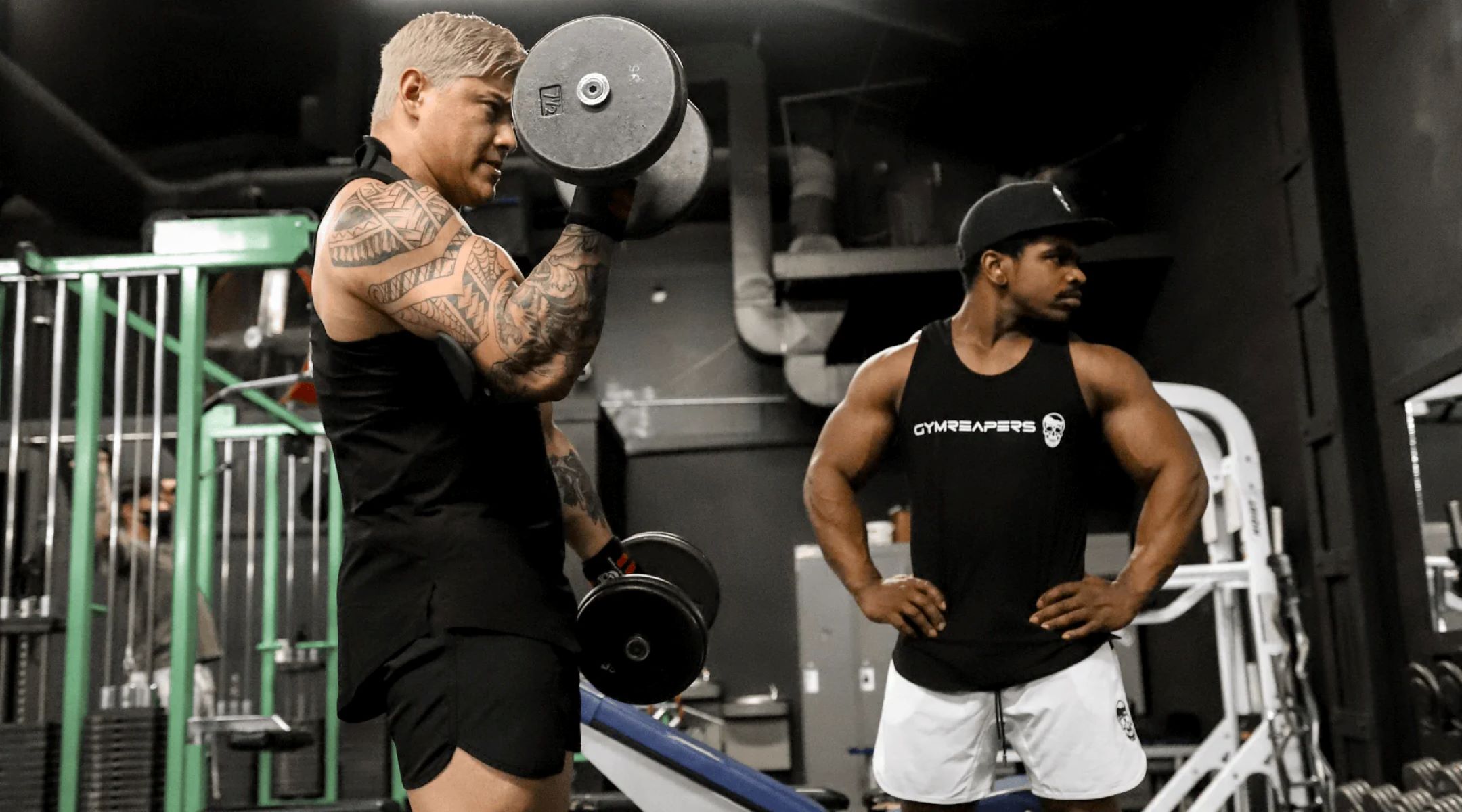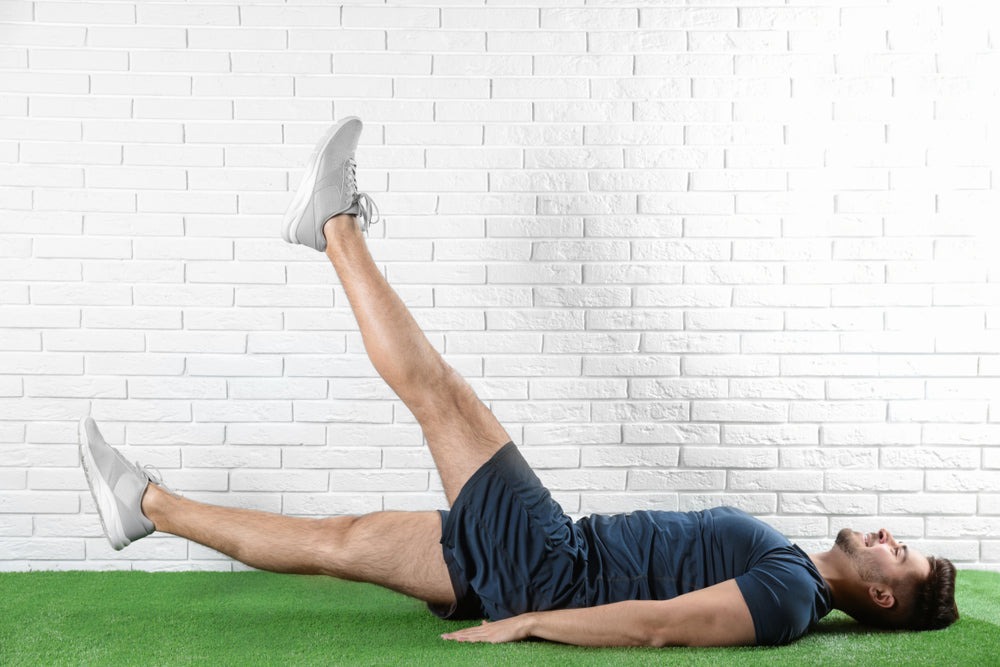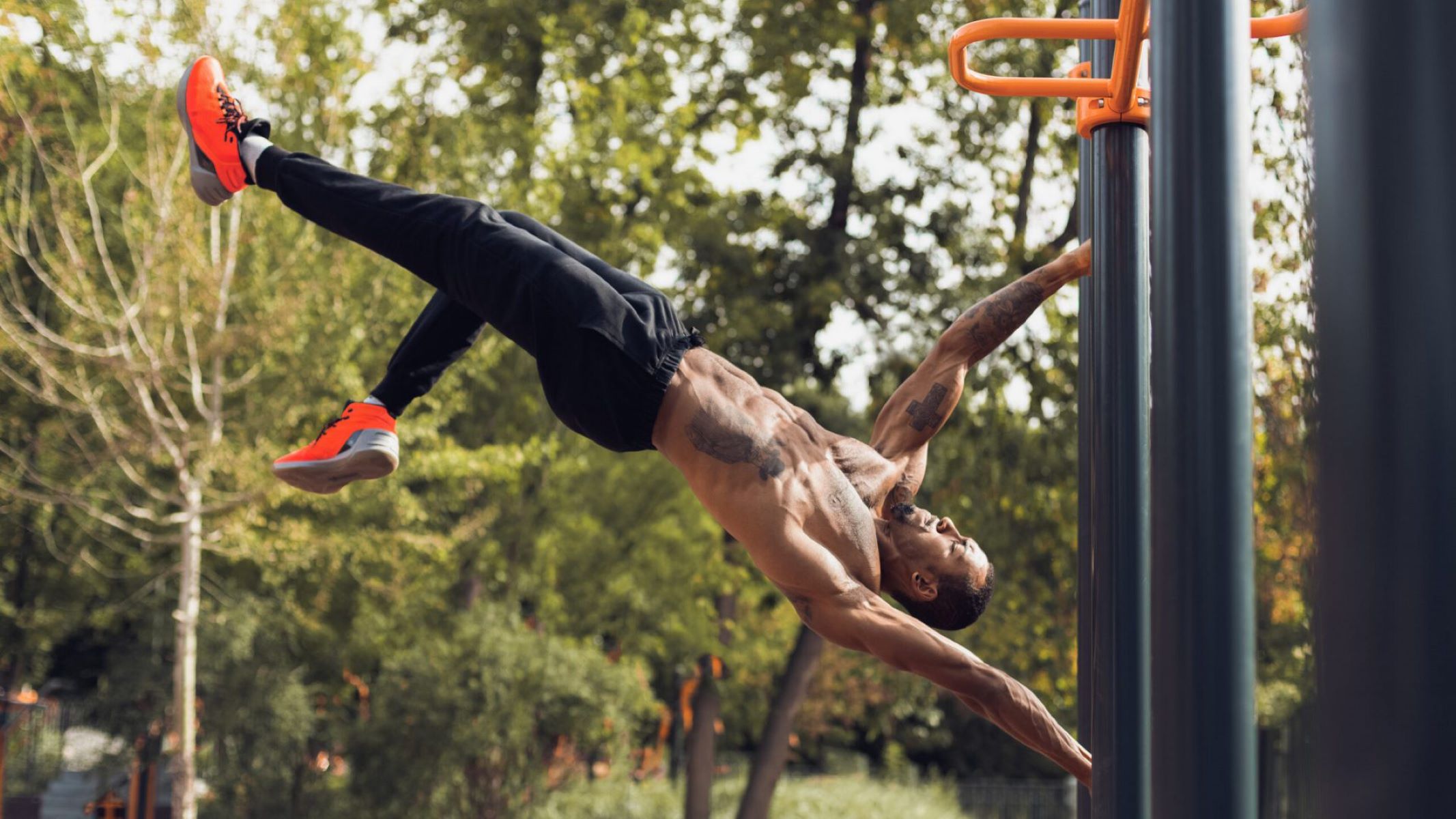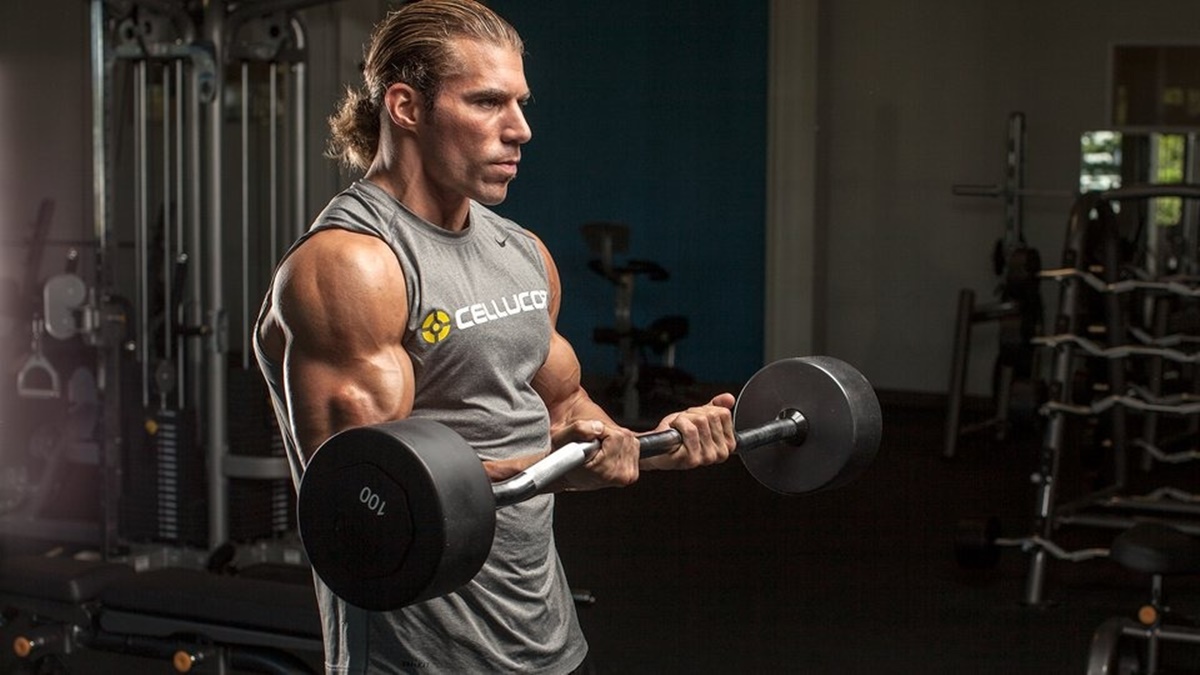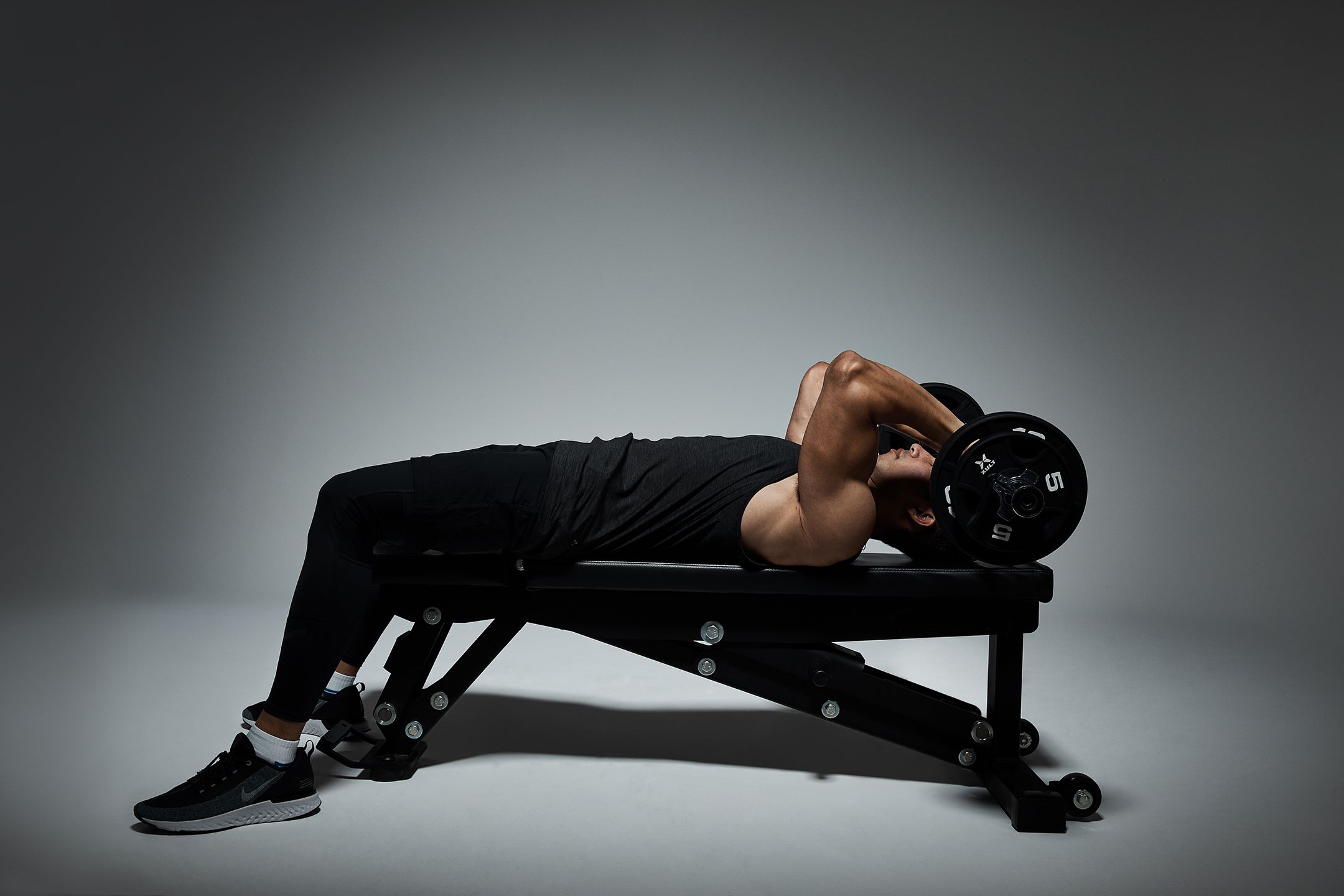Home>Misc>Featured>What To Do When You Can’t Straighten Arm After Bicep Workout


Featured
What To Do When You Can’t Straighten Arm After Bicep Workout
Modified: January 2, 2024
Discover effective solutions for when you're unable to straighten your arm after a bicep workout. Get featured tips to alleviate discomfort and promote muscle recovery.
Introduction
Have you ever experienced difficulty in straightening your arm after a bicep workout? It can be a frustrating and uncomfortable sensation, leaving you wondering what went wrong. It’s important to understand that this is a common issue that many people face after an intense bicep workout.
The biceps muscle, located in the upper arm, is responsible for flexing the elbow joint and rotating the forearm. When we engage in exercises that target the biceps, such as curls or pull-ups, the muscle fibers experience microscopic tears. These tears are a normal part of the muscle-building process and can lead to temporary stiffness and limited range of motion.
There are various factors that can contribute to the inability to straighten your arm after a bicep workout. One common cause is delayed onset muscle soreness (DOMS), which typically occurs 24 to 48 hours after intense exercise. DOMS can result in muscle stiffness and decreased flexibility.
Another cause can be muscle fatigue or overexertion. Pushing yourself too hard during your workout or not allowing enough time for rest and recovery can lead to muscle fatigue, making it difficult to fully extend your arm.
In some cases, improper form or technique during bicep exercises can lead to strain or injury. It’s important to ensure that you are using proper form and not putting excessive stress on your muscles, tendons, and joints.
In this article, we will explore the causes of the inability to straighten your arm after a bicep workout, and discuss the steps you can take to alleviate the discomfort and promote recovery. Whether you are a seasoned athlete or a fitness enthusiast, these tips will help you navigate through this common post-workout concern and get you back to full range of motion.
Understanding the Biceps Muscle
The biceps muscle, also known as the biceps brachii, is a two-headed muscle located in the upper arm. It plays a crucial role in various upper body movements, such as lifting, pulling, and flexing the elbow joint.
The biceps muscle is composed of a long head and a short head. The long head originates from the supraglenoid tubercle of the scapula, while the short head originates from the coracoid process of the scapula. Both heads merge to form a single muscle belly, which then inserts into the radius bone of the forearm.
As a flexor muscle, the biceps muscle is responsible for bending the elbow joint, allowing us to perform movements like curling a weight towards our shoulder or bringing our hand closer to our chest. Additionally, it assists in supination, which is the movement of rotating the forearm, such as turning a doorknob or using a screwdriver.
During a bicep workout, exercises like bicep curls, hammer curls, and chin-ups, place a significant amount of stress on the biceps muscle. The muscle fibers contract and generate force, resulting in the targeted muscle growth and strength development.
It’s important to note that the biceps muscle is relatively small compared to other major muscle groups in the body. While it is a prominent muscle that many people desire to develop, it is necessary to give it adequate rest and recovery to avoid overuse injuries and prevent strain.
Understanding the anatomy and function of the biceps muscle is essential in identifying the root causes of difficulty in straightening the arm after a bicep workout. By having a comprehensive understanding of this muscle, you can take appropriate measures to promote recovery, prevent injuries, and optimize its growth and function.
Causes of Inability to Straighten Arm After Bicep Workout
Experiencing difficulty in straightening your arm after a bicep workout can be attributed to several factors. Understanding these causes will help you identify the underlying issue and implement the appropriate measures for recovery.
1. Delayed Onset Muscle Soreness (DOMS): One of the most common causes of the inability to straighten your arm after a bicep workout is DOMS. DOMS typically occurs 24 to 48 hours after intense exercise and is characterized by muscle stiffness, tenderness, and reduced range of motion. The microscopic tears in the muscle fibers, which occur during the workout, trigger an inflammatory response that leads to muscle soreness and stiffness.
2. Muscle Fatigue: Pushing yourself too hard during your bicep workout or overexerting your muscles can lead to muscle fatigue. When the muscles become fatigued, they struggle to generate the necessary force for contraction, making it difficult to fully extend the arm. This can be exacerbated by inadequate rest and recovery periods between workouts.
3. Incorrect Form or Technique: Using improper form or technique during bicep exercises can put excessive stress on the muscles, tendons, and joints. This strain can lead to discomfort and limited range of motion. It’s crucial to ensure that you are performing each exercise with proper form to avoid injuries and optimize muscle engagement.
4. Tendonitis: Tendonitis, or inflammation of the tendons, can occur in the biceps tendon and contribute to difficulty in straightening the arm. Overuse or repetitive strain on the tendons can lead to inflammation and swelling, resulting in pain and limited mobility.
5. Muscle Strain or Tear: In some cases, the inability to straighten the arm after a bicep workout may be indicative of a muscle strain or tear. This can occur when the muscles are subjected to excessive force or overload, leading to damage to the muscle fibers. This type of injury may require more extensive treatment and rehabilitation.
It’s essential to listen to your body and pay attention to any signs of discomfort or limitation in your range of motion. Identifying the cause of your inability to straighten your arm will help you determine the appropriate steps to take for recovery and prevent further injury.
Immediate Steps to Take
When you find yourself unable to straighten your arm after a bicep workout, there are several immediate steps you can take to alleviate discomfort and promote recovery. These steps will help reduce inflammation, ease muscle soreness, and improve your range of motion.
1. Rest and Ice: Give your muscles time to rest and recover. Avoid any strenuous activity that may aggravate the condition. Applying ice to the affected area can help reduce inflammation and provide pain relief. Wrap an ice pack in a thin towel and apply it to your arm for 15-20 minutes every few hours.
2. Compression: Consider using a compression sleeve or bandage to reduce swelling and provide support to the affected area. Compression can help improve blood flow and aid in the healing process.
3. Elevation: Elevating your arm above the heart level can help reduce swelling and promote fluid drainage. Prop your arm up on pillows or cushions to elevate it while resting.
4. Pain Relief: Over-the-counter nonsteroidal anti-inflammatory drugs (NSAIDs) such as ibuprofen or acetaminophen can help alleviate pain and reduce inflammation. Follow the recommended dosage and consult with a healthcare professional if needed.
5. Gentle Stretching: Perform gentle, controlled stretches to improve your range of motion. Start with simple movements, such as slowly bending and straightening your arm, gradually increasing the intensity as tolerated. Avoid any sudden or jerky movements that may exacerbate the condition.
6. Massage and Foam Rolling: Utilize self-massage techniques or foam rolling to alleviate muscle tension and soreness. Apply gentle pressure to the affected area, gradually increasing intensity as tolerated. Remember to listen to your body and avoid applying excessive force that may cause further injury.
It’s important to note that these immediate steps are intended to provide temporary relief and promote initial recovery. If the symptoms persist or worsen, it is advisable to seek medical attention for a thorough evaluation and appropriate treatment.
By taking these immediate steps, you can effectively manage the discomfort and begin the process of restoring full range of motion in your arm after a bicep workout.
Home Remedies and Self-Care
In addition to immediate steps, there are several home remedies and self-care strategies that can aid in the recovery process and help you regain full range of motion in your arm after a bicep workout.
1. Warm Compress: Applying a warm compress to the affected area can help relax the muscles, increase blood flow, and promote healing. Use a heating pad, warm towel, or take a warm shower to soothe the muscles and alleviate stiffness.
2. Gentle Exercise: Engage in gentle exercises and movements to promote blood circulation and improve flexibility. Perform slow and controlled movements, such as wrist rotations, shoulder rolls, and gentle stretching exercises for the biceps and surrounding muscles.
3. Epsom Salt Bath: Soaking in a warm bath with Epsom salt can help reduce inflammation and relieve muscle soreness. Add a cup or two of Epsom salt to a tub of warm water and soak for 15-20 minutes to experience the relaxing and healing benefits.
4. Proper Nutrition and Hydration: Ensure you are fueling your body with a well-balanced diet that provides essential nutrients for muscle recovery. Stay hydrated by drinking enough water throughout the day, as proper hydration is crucial for muscle function and repair.
5. Adequate Rest and Sleep: Getting sufficient rest and sleep is vital for muscle recovery. Give your body ample time to heal and rebuild by incorporating rest days into your fitness routine and prioritizing quality sleep each night.
6. Gradual Return to Activity: Once the initial discomfort subsides and range of motion improves, gradually reintroduce exercise and activities. Start with low-intensity workouts and gradually increase the duration and intensity over time to allow the muscles to rebuild strength without overexertion.
7. Stress Management: Stress can negatively impact the recovery process. Incorporate stress-management techniques such as deep breathing exercises, meditation, or engaging in activities you enjoy to help relax your mind and support your body’s healing process.
Remember, home remedies and self-care strategies can complement professional medical advice but should not be seen as a substitute. If your symptoms persist, worsen, or are accompanied by severe pain or swelling, it is important to consult with a healthcare professional for a proper diagnosis and treatment plan.
By incorporating these home remedies and self-care practices into your routine, you can aid in the recovery process, improve your overall well-being, and regain full range of motion in your arm after a bicep workout.
Seeking Medical Attention
While many cases of difficulty in straightening the arm after a bicep workout can be managed with self-care and home remedies, there are instances where seeking medical attention is necessary. Consulting with a healthcare professional can help determine the underlying cause, provide proper diagnosis, and guide you towards appropriate treatment options.
1. Persistent Symptoms: If your symptoms persist or worsen despite home remedies and self-care efforts, it is advisable to seek medical attention. This includes ongoing pain, swelling, limited range of motion, or difficulty performing daily activities. A healthcare professional can conduct a thorough examination and order additional tests to identify any underlying issues.
2. Severe Pain or Swelling: If you experience severe pain or swelling that does not subside or is accompanied by other concerning symptoms, it is important to seek immediate medical attention. This could be indicative of a more serious injury or medical condition that requires prompt evaluation and treatment.
3. Difficulty Performing Routine Tasks: If the inability to straighten your arm significantly affects your ability to perform routine tasks or impacts your quality of life, it is recommended to consult with a healthcare professional. They can assess the extent of the injury, provide appropriate guidance, and recommend the necessary treatment or rehabilitation plan.
4. History of Injuries or Chronic Conditions: Individuals with a history of previous injuries or pre-existing chronic conditions may be at a higher risk for complications or more severe symptoms. Consulting with a healthcare professional can help manage these underlying conditions and provide tailored advice for your specific needs.
5. Professional Athletes or Extreme Fitness Enthusiasts: If you are a professional athlete or engage in extreme fitness activities, it is important to seek medical attention for any issues related to your arm after a bicep workout. A healthcare professional can provide guidance, create a specialized treatment plan, and ensure a safe and efficient return to your athletic pursuits.
Remember, a healthcare professional’s expertise can help properly diagnose the underlying cause and provide appropriate treatment to facilitate a full recovery. They can offer personalized advice on rehabilitation exercises, therapy options, or other medical interventions as needed.
It’s important to prioritize your health and well-being by seeking medical attention if you have any concerns or doubts about your condition. By doing so, you can ensure the best possible outcome and minimize the risk of further complications.
Rehabilitation and Recovery Exercises
Once you have sought medical attention and received guidance from a healthcare professional, they may recommend specific rehabilitation and recovery exercises to help support the healing process and restore full range of motion in your arm after a bicep workout. These exercises are designed to strengthen the muscles, improve flexibility, and promote overall recovery.
1. Range of Motion Exercises: Gentle range of motion exercises are crucial in maintaining flexibility and preventing stiffness. These can include wrist flexion and extension, elbow flexion and extension, and shoulder rotations. Start with small movements and gradually increase the range of motion as tolerated.
2. Strengthening Exercises: As the healing progresses, your healthcare professional may introduce strengthening exercises to rebuild the strength and stability of the biceps and surrounding muscles. These exercises could include bicep curls with light dumbbells, band resistance exercises, or bodyweight exercises like push-ups or planks.
3. Isometric Exercises: Isometric exercises involve contracting the muscles without any joint movement. These exercises can strengthen the muscles without putting excessive strain on the affected area. Isometric exercises for the biceps can include holding a static position while contracting the muscles, such as squeezing a towel or holding a resistance band in a flexed bicep position.
4. Eccentric Exercises: Eccentric exercises focus on the lengthening or lowering phase of a movement. These exercises can help rebuild muscle strength and control. For example, slowly lowering a dumbbell or resistance band during a bicep curl exercise can help improve muscle function and facilitate recovery.
5. Stretching and Flexibility Exercises: Stretching exercises can help improve flexibility and prevent muscle imbalances. Gentle stretching of the biceps, forearm, and shoulder muscles can aid in loosening tight tissues and improve overall range of motion. Stretching techniques such as static stretching, dynamic stretching, and proprioceptive neuromuscular facilitation (PNF) stretching can be beneficial.
6. Gradual Progression: It’s crucial to progress these exercises gradually, starting with lower intensity or lighter weights and gradually increasing as tolerated. Listen to your body and avoid pushing too hard or causing pain during the exercises. Working with a physical therapist or an exercise specialist can ensure proper form, progression, and individualized guidance throughout your rehabilitation journey.
Remember, rehabilitation and recovery exercises should be performed under the guidance of a healthcare professional or a qualified fitness expert. They can assess your specific condition, monitor your progress, and make necessary adjustments to your exercise routine. Adhering to the recommended exercises and following a structured rehabilitation program will support your recovery and help you regain full functionality of your arm.
Prevention Tips
Preventing difficulty in straightening your arm after a bicep workout is crucial to ensure ongoing muscle health, prevent injuries, and optimize your overall fitness journey. By implementing the following prevention tips, you can minimize the risk of experiencing post-workout discomfort and promote long-term arm strength and flexibility.
1. Warm Up Properly: Before starting any exercise routine, it’s essential to warm up your muscles. Engage in dynamic stretches and movements that target the biceps, shoulders, and forearms to increase blood flow and prepare your muscles for the upcoming workout.
2. Use Proper Form and Technique: Using correct form and technique during bicep exercises is crucial in preventing strain and injury. Practice proper posture, maintain a stable core, and avoid using momentum to lift weights. Seek guidance from a qualified fitness professional to ensure you are performing each exercise correctly.
3. Gradual Progression: Progress your workouts gradually by increasing weights, repetitions, or intensity over time. Avoid sudden spikes in training volume or intensity, as it can place excessive strain on the muscles and tendons.
4. Listen to Your Body: Pay attention to your body’s signals and avoid pushing through pain or discomfort. If you experience any unusual sensations during your workout, modify or stop the exercise immediately. Pushing beyond your limits can lead to muscle fatigue or even serious injuries.
5. Incorporate Rest Days: Give your muscles adequate time to rest and recover between workouts. Rest days are essential for muscle repair and growth. Alternate between bicep-focused workouts and workouts targeting other muscle groups to prevent overuse and allow for balanced development.
6. Include Flexibility and Mobility Exercises: Regularly incorporate stretching and mobility exercises into your routine to improve flexibility and range of motion. Stretching the biceps, forearms, and shoulders before and after your workouts can help prevent muscle imbalances and reduce the risk of stiffness.
7. Stay Hydrated: Proper hydration is essential for muscle function and recovery. Drink enough water throughout the day, especially during and after exercise, to support optimal muscle performance.
8. Proper Nutrition: Fuel your body with a balanced diet that includes lean proteins, complex carbohydrates, and healthy fats. Adequate nutrition provides the necessary nutrients and energy for muscle repair and growth.
9. Cross-Train and Vary Your Workouts: Incorporate a variety of exercises and training modalities to prevent overuse injuries and promote overall muscle balance. Include exercises that target different muscle groups and engage different movement patterns.
10. Seek Professional Guidance: If you’re new to strength training or have specific concerns about your arm health, consider seeking guidance from a fitness professional or certified personal trainer. They can help create a tailored workout plan and ensure proper form and progressions.
By following these prevention tips, you can reduce the risk of experiencing difficulty when straightening your arm after a bicep workout. Prioritizing proper technique, gradual progression, adequate rest, and overall muscle health will contribute to a safe and effective fitness journey.
Conclusion
Experiencing difficulty in straightening your arm after a bicep workout can be a temporary setback in your fitness journey, but with proper care and attention, you can alleviate discomfort and promote a full recovery. Understanding the causes, implementing immediate steps, and following rehabilitation guidelines play a crucial role in returning your arm to its optimal function.
Remember to prioritize rest, ice, compression, and elevation in the immediate aftermath of a bicep workout to reduce inflammation and facilitate healing. Incorporate self-care practices such as gentle stretching, warm compresses, and adequate rest to support the recovery process at home. If symptoms persist or worsen, seeking medical attention is vital for a proper diagnosis and tailored treatment plan.
Rehabilitation exercises, focusing on range of motion, strengthening, and flexibility, are essential in regaining full functionality of your arm. Gradual progression, proper form, and guidance from healthcare professionals or fitness experts will enhance your recovery journey. Additionally, implementing preventative measures, such as warming up properly, using correct form, and incorporating rest days, will help minimize the likelihood of future difficulties after a bicep workout.
Remember that each person’s recovery journey is unique, and it’s important to listen to your body throughout the process. Patience, consistency, and a holistic approach that combines proper exercise, nutrition, and self-care will contribute to a successful recovery and promote long-term arm health.
By implementing the tips and strategies outlined in this article, you can effectively navigate through the challenges of difficulty in straightening your arm after a bicep workout and ultimately achieve your fitness goals while keeping your arm strong, flexible, and injury-free.
